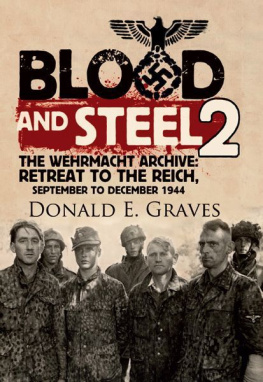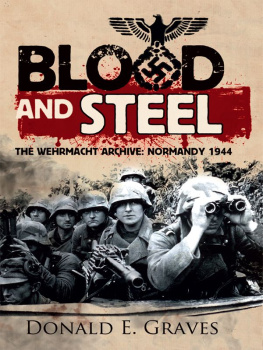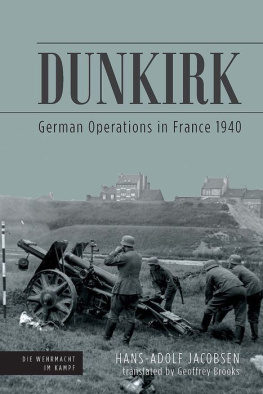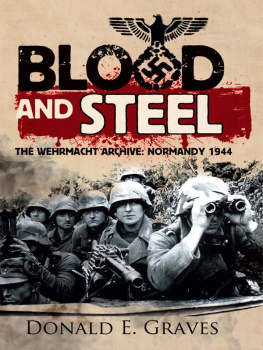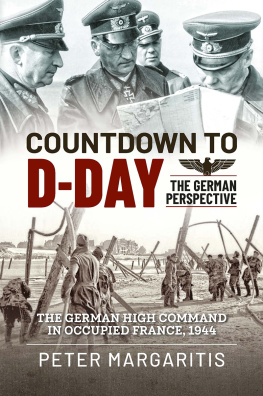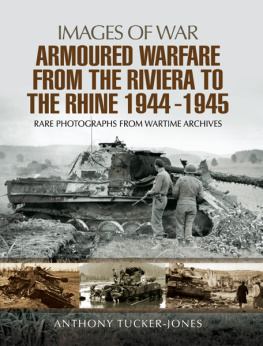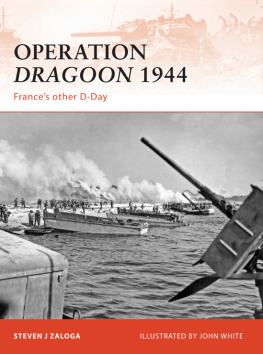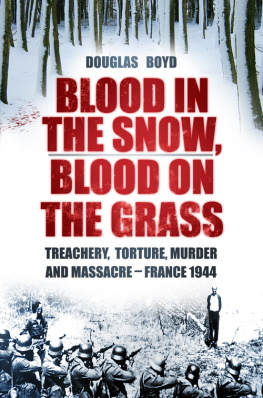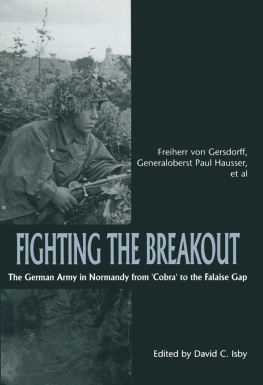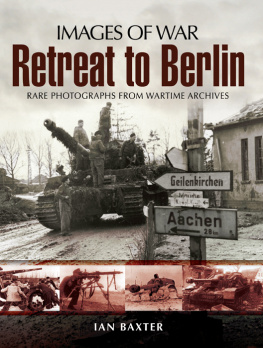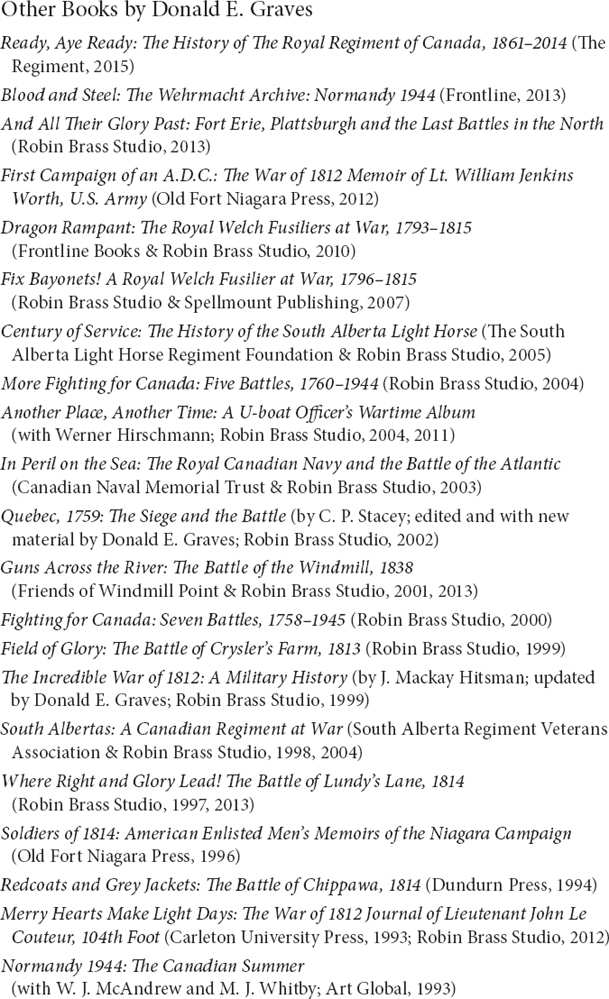


Blood and Steel 2: The Wehrmacht Archive:
Retreat to the Reich, September to December 1944
This edition published in 2015 by Frontline Books,
an imprint of Pen & Sword Books Ltd,
47 Church Street, Barnsley, S. Yorkshire, S70 2AS
www.frontline-books.com
Copyright Donald E. Graves, 2015
The right of Donald E. Graves to be identified as the author
of this work has been asserted by him in accordance with
the Copyright, Designs and Patents Act 1988.
ISBN: 978-1-84832-851-8
EPUB ISBN: 978-1-47384-574-9
PRC ISBN: 978-1-47384-575-6
All rights reserved. No part of this publication may be reproduced,
stored in or introduced into a retrieval system, or transmitted,
in any form, or by any means (electronic, mechanical, photocopying,
recording or otherwise) without the prior written permission of the publisher.
Any person who does any unauthorized act in relation to this publication
may be liable to criminal prosecution and civil claims for damages.
CIP data records for this title are available from the British Library
For more information on our books, please visit
or write to us at the above address.
Printed and bound by CPI Group (UK) Ltd, Croydon, CR0 4YY
Typeset in 10.8/13.5 point Minion Pro Regular
Contents
Chapter 1Stemming the Flood
Preparing to Defend the Reich, August to November 1944
Chapter 3The Individual Soldiers Experience
Diaries, Letters, Reports and Memoirs
Chapter 9Problems
Desertion, Discipline, Transport and Food
Chapter 12In Enemy Hands
The Experience of Allied and German Prisoners of War
List of Plates
Nijmegen Bridge, 1944. (Library and Archives of Canada)
Introduction
In the summer of 1944 the Third Reich was pummelled by a series of catastrophes. On 4 June, Allied armies took Rome and two days later landed in Normandy. On 22 June, the Soviet Union launched Operation BAGRATION against Army Group Centre and over the next two months followed it with a series of major offensives that totally or partially destroyed eighty-three German divisions on the Eastern Front. Germanys allies, sensing that the tide of war had shifted against her, began to drop away in short order, Bulgaria, Rumania and Finland either negotiated peace with the Soviet Union or switched sides and Hungary teetered on the brink. On 20 July a conspiracy of army officers attempted to assassinate Hitler and, although they failed, the event sent shock waves throughout the Nazi state. Three days later the United States army began Operation COBRA, the breakout from Normandy, which eventually caused the nearcollapse of the German forces on that front. On 15 August, the Western Allies landed in southern France and, on 25 August, Paris was liberated. Brussels followed on 3 September and Antwerp the following day. The German retreat from France showed no signs of stopping and threatened to become a panic-stricken migration. The Dutch would long remember 5 September 1944 as Dolle Dinsdage (Crazy Tuesday) as long columns of German soldiers, sailors and airmen, mounted on a bewildering variety of transport piled high with loot and lady friends, drove through their towns day and night. By the first week of September, it appeared to many Allied soldiers and Europeans that the war would soon be over.
During early September, Allied armies came very close to breaking the back of the Wehrmacht in the west. The problem was that as the American, British and Canadian armies moved away from Normandy, their supply lines grew longer and logistical concerns began to dominate Allied planning. Field Marshal Montgomery ordered First Canadian Army to take the ports of Dieppe, Dunkirk, Boulogne and Calais on the Channel coast to help ease supply difficulties while Second British Army advanced on the right flank into Belgium. To the south the three armies of General Omar Bradleys 12th U.S. Army Group also pushed east through Alsace and Lorraine toward the German frontier. The Allied supply problem would have been eased if the great port of Antwerp could have been used but, unfortunately, the British troops that captured it did not see fit to advance a few miles and cut off the Beveland Peninsula on the north side of the Scheldt Estuary. This omission not only permitted a large part of the German Fifteenth Army to escape, it also left both sides of the estuary in German hands, preventing the use of Antwerps facilities.
Montgomery, however, was not concerned about this as he had a plan in mind. He convinced General Dwight D. Eisenhower, the Supreme Allied Commander, to approve a daring operation, codenamed MARKETGARDEN, using airborne troops to seize bridges on the major waterways in Holland that would create a corridor along which Second British Army could advance over the Rhine and into the Ruhr. Eisenhower approved MARKET-GARDEN but also stressed to Montgomery the importance of clearing the Scheldt and opening Antwerp. Determined to get across the Rhine, Montgomery gave the job of besieging the Scheldt to First Canadian Army which was miles back and just beginning the task of clearing the Channel ports, even as Second British Army moved away from the Scheldt. This was a very dangerous deployment but in the heady days of September 1944, it seemed a risk well worth taking.
Unfortunately, Allied plans did not take into account the enemy, and as September wore on, the Third Reich managed to make a remarkable recovery from the summer disasters. On the Eastern Front, the Red Army was forced to pause on the banks of the Vistula because of logistical difficulties. Hitler appointed two of his most trusted lieutenants, Josef Goebbels and Heinrich Himmler, as Plenipotentiary for Total War and commander of the Ersatz Heer or Home Army respectively. They initiated a series of emergency measures which combed out all available manpower from the Reichs civilian population, created the Volkssturm or home guard, curtailed all activities that were not essential to the war effort, provided labour for war industries and constructed fixed defences in the east and west. In the last six months of 1944, these measures procured more than a million men for the German armed forces but this only replaced the losses suffered in the same period.
With the Russian armies pausing before Warsaw and in the Carpathian Mountains, the greatest single threat was on the Western Front. The same day that Antwerp fell, Feldmarschall Gerd von Rundstedt was appointed commander in the west and, with the energetic efforts of his subordinate, Feldmarschall Walter Model, the commander of Armeegruppe B and a master of improvisation, the two were able to stop the panicky flight through Belgium, Holland and eastern France. Collection points were created to round up stragglers who were formed into ad hoc battlegroups and placed in good defensive positions behind the many canals and waterways. By dint of an extreme effort, 135,000 men were taken out of training establishments and the rear services, and sent west. The Luftwaffe overwhelmed by Allied air superiority alone contributed 30,000 men who were formed into the First Parachute Army to be commanded by Generaloberst Kurt Student, the father of the German airborne forces. Rundstedt planned to halt the Allies along the
Next page
